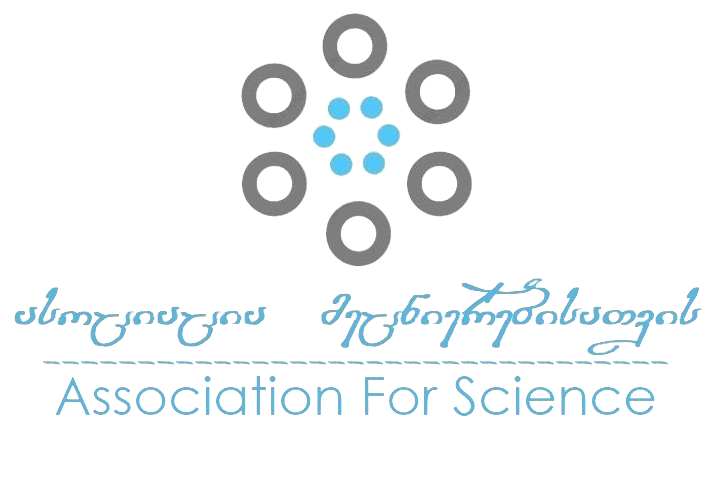The Role of Endogenous Peptides in the Systemic Self-Regulation of Organisms
Keywords:
Peptide, Self-regulation, Systemic self-regulation, Peptide-hormone, HomeostasisSynopsis
Regulatory peptides are a wide group of biologically active compounds that affect the current physiological processes in living organisms. Peptides are synthesized in the organism of all biological species, from bacteria to mammals. From a biological point of view, the regulatory peptides have a versatile effect on the organism, they can act as neurotransmitters, neuromodulators, hormones, growth factors, cytokines, etc..The regulatory systems are necessary for all multicellular organisms, to control the function of the cell, to unite it, into one whole organism. In the first half of the 20th century, it was believed that, there were three types of such systems: nervous, immune and endocrine. It was considered that, these systems functioned independently andtheir interaction just was an exceptions. In the 60s of the 20th century, was accumulated enough scientific data, according to which the biologically active peptides were the determining factors of the joint action of the above systems.For today, the physicochemical properties, their specific action, synthetic analogues of physiologically active peptides have been explored.The chemical synthesis of regulatory peptides has been implemented and their therapeutic effects on the human body have been proven.The monograph presents the effect of endogenous peptides on various physiological processes in biological organisms, aslo theirstructural construction and mechanisms of action. In addition, there is discussed, the use and perspectives,of both natural and artificial peptides in medicine.
Downloads
References
Baker C., Richards L.J., Dayan C.M., Jessop D.S.Corticotropin-releasing hormone immunoreactivity in human T and B cells and macrophages: colocalization with arginine vasopressin // J. Neuroendocrinol. 2003. Vol. 15. № 11. P. 1070–1074.
Bankir L., Perucca J., Weinberger M.H. Ethnic differences in urine concentration: possible relationship to blood pressure //Clin. J. Am. Soc. Nephrol. 2007. Vol. 2. № 2. P. 304–312.
Caldwell H.K., Young W.S. III Oxytocin and vasopressin:genetics and behavioral implications // Handbook of neurochemistry and molecular neurobiology neuroactive proteins and peptides / A Lajtha, R. Lim. Berlin: Springer, 2006. P. 573–607.
Chiu T., Wu S.S., Santiskulvong C. et al. Vasopressinmediated mitogenic signaling in intestinal epithelial cells // Am. J. Physiol. Cell Physiol. 2002. Vol. 282. № 3. P. C434–450.
Dheen S.T., Tay S.S., Wong W.C. Arginine vasopressin- and oxytocin-likes immunoreactive neurons in the hypothalamic paraventricular and supraoptic nuclei of streptozotocininduced diabetic rats // Arch. Histol. Cytol. 1994. Vol. 57. № 5. P. 461–472.
Enhorning S., Wang T.J., Nilsson P.M. et al. Plasma copeptin and the risk of diabetes mellitus // Circulation. 2010. Vol. 121. № 19. P. 2102–2108.
Gallo-Payet N., Guillon G. Regulation of adrenocortical function by vasopressin // Horm. Metab. Res. 1998. Vol. 30. № 6–7. P. 360–367.
Ghosh P.M., Mikhailova M., Bedolla R., Kreisberg J.I.Arginine vasopressin stimulates mesangial cell proliferation by activating the epidermal growth factor receptor // Am. J. Physiol. Renal. Physiol. 2001. Vol. 280. № 6. P. 972–979.
Havel R.J., Goldfien A. The role of the sympathetic nervous system in the metabolism of free fatty acids // J. Lipid. Res. 1959. Vol. 1. № 1. P. 102–108.
Hiroyama M., Aoyagi T., Fujiwara Y. et al. Hypermetabolism of fat in V1a vasopressin receptor knockout mice // Mol. Endocrinol. 2007. Vol. 21. № 1. P. 247–258.
Koshimizu T.A., Nakamura K., Egashira N. et al. Vasopressin V1a and V1b receptors: from molecules to physiological systems // Physiol. Rev. 2012. Vol. 92. № 4. P. 1813–1864.
Kuro-o M. Klotho // Pflugers Arch. 2010. Vol. 459. № 2.P. 333–343.
Landry D.W., Levin H.R., Gallant E.M. et al. Vasopressin deficiency contributes to the vasodilation of septic shock // Circulation. 1997. Vol. 95. № 5. P. 1122–1125.
Luttinger D., Hernandez D.E., Nemeroff C.B., Prange A.J. Jr. Peptides and nociception // Int. Rev. Neurobiol. 1984. Vol. 25. P. 185–241.
Mavani G.P., DeVita M.V., Michelis M.F. A review of the nonpressor and nonantidiuretic actions of the hormone vasopressin // Front. Med. (Lausanne). 2015. Vol. 2.ID 19.
Ohnishi M., Razzaque M.S. Dietary and genetic evidence for phosphate toxicity accelerating mammalian aging //FASEB J. 2010. Vol. 24. № 9. P. 3562–3571.
Park S.J., Shin J.I. Inflammation and hyponatremia: an underrecognized condition? // Korean J. Pediatr. 2013. Vol. 56. № 12. P. 519–522.
Pasquali R., Gagliardi L., Vicennati V. et al. ACTH and cortisol response to combined corticotropin releasing hormonearginine vasopressin stimulation in obese males and its relationship to body weight, fat distribution and parameters of the metabolic syndrome // Int. J. Obes. Relat. Metab. Disord. 1999. Vol. 23. № 4. P. 419–424.
Ring R.H. The central vasopressinergic system: examining the opportunities for psychiatric drug development // Curr. Pharm. Des. 2005. Vol. 11. № 2. P. 205–225.
Saleem U., Khaleghi M., Morgenthaler N.G. et al. Plasma carboxy-terminal provasopressin (copeptin): a novel marker of insulin resistance and metabolic syndrome // J. Clin.Endocrinol.
Metab. 2009. Vol. 94. № 7. P. 2558–2264.

Downloads
Published
Categories
License

This work is licensed under a Creative Commons Attribution-NonCommercial-NoDerivatives 4.0 International License.



